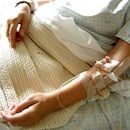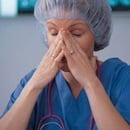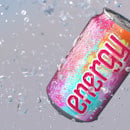
Fun in the Sun: New FDA Guidelines
Summer is just around the corner and that means more time spent in the great outdoors. We already know that the use of sunscreen products can help protect against premature aging, sunburn, actinic keratosis, and a variety of skin cancers. Now that the FDA’s new sunscreen labeling regulations are in place, it seems the ideal time to go over the latest in sun protection guidelines and safety tips.
Actinic keratosis is a common pre-cancerous lesion of the skin. Untreated, actinic keratoses can progress to squamous cell carcinoma. Basal cell carcinoma, the most common skin cancer, is usually found in areas of the body that receive the most sun exposure, such as the scalp, face, arms, and legs. This type of cancer is slow growing and infiltrates and destroys the surrounding tissue until it is removed.
Squamous cell carcinoma is the second most common type of skin cancer. It is primarily found in sun-exposed areas of the body. When left untreated, it can spread locally and occasionally metastasize.
Melanoma, the most serious type of skin cancer but the least common, develops in the melanocytes. Exposure to ultraviolet radiation increases the risk of developing melanoma. Left untreated, this cancer can spread locally and is more likely to metastasize than any other type of skin cancer.
After the FDA revised and updated its sunscreen labeling requirements, manufacturers of over-the-counter sunscreen products were required to be in compliance with their labeling by December 2012. Not only are the requirements designed to help protect consumers from skin damage due to excessive sun exposure, but it is hoped that the new labeling will make it easier for consumers to make an informed choice when choosing between sun protection products.
New labeling Requirements Must Follow These Updated Criteria:
Sunscreens with SPF (Sun Protection Factor) 15 or higher and labeled as “broad spectrum” must protect against sunburn and reduce the risk of skin cancer and premature skin aging if used as directed and with other sun protection measures. Sunscreen products with an SPF value greater than 50 will be labeled only as “SPF 50+”. The FDA does not have adequate data demonstrating that products with SPF values higher than 50 provide additional protection compared to products with SPF values of 50.
In addition, sunscreen products that pass an FDA standard test, indicating protection against all types of sun damage caused by UVA and UVB, may be labeled “broad spectrum.” A greater percentage of a "broad spectrum” product’s total protection must be against UVA (which can protect against sunburn, photo-aging, and skin cancer). Products that protect only against sunburn (primarily caused by UVB) cannot be labeled “broad spectrum.”
The term “waterproof” or “sweatproof” will no longer appear on sunscreen labels. Manufacturers are allowed to label products “water resistant,” but must state the amount of time the user can expect to get sun protection while in water or sweating based on standard testing. Two times are permitted on the label: 40 minutes or 80 minutes. Since no sunscreen can completely block all UVA and UVB, the term “sunblock” is prohibited from use on the product label. Lastly, sunscreens cannot claim immediate protection on application or protection for more than two hours without reapplication.
Practical sun safety tips include using sunscreens with broad spectrum SPF values of 15 or higher regularly and as directed. To receive the most benefit from sunscreen, apply at least an ounce of sunscreen over your entire body exposed to the sun, and reapply sunscreen at least every two hours, more if you are sweating or in and out of water.
Try to avoid direct sun between the hours of 10 a.m. and 4 p.m., when the sun’s rays are most intense, and use appropriate cover-up when in the sun. This includes a hat with at least a 2 to 3-inch brim all around to protect areas often exposed to intense sun, such as the ears, eyes, forehead, nose, and scalp (ACS, 2013). Remember to apply sunscreen throughout the year, even on cloudy days. Don’t forget to protect your lips; excessive exposure to the sun’s rays can increase the risk of lip cancer. Use lipstick, balm, or gloss that contains sunscreen. Reapply often.
Be sure to wear sunglasses. Wrap-around sunglasses with at least 99 percent UV absorption provide the best protection for the eyes and the delicate skin around the eyes. Labels that say “UV absorption up to 400 nm” or “Meets ANSI UV Requirements” mean the glasses block at least 99 percent of UV rays (ACS, 2013). Because spending time in the sun can lead to skin aging and increase the risk of skin cancer, it’s important to carefully review sunscreen labels for the most appropriate choice and regularly practice sun safety guidelines – not just over the summer months, but all year long.
Biography:
JoAnne Conrad, MS is a licensed dietitian in the State of California. Ms. Conrad has worked as a manager in the Department of Internal Medicine, as a Project Manager for Health Connect, and supervisor for the Cardio Protective Clinic -- both at Kaiser Permanente. She has also served as a clinical research monitor and supervisor and is currently a speaker at RxSchool.com where she presents live webinar courses and contributes to the site’s CE curriculum.
References:
American Cancer Society [ACS]. (2013). Sun and UV Exposure: Skin Cancer Prevention and Early Detection.
U.S. Food and Drug Administration [FDA]. (2012). Consumer Updates: FDA Sheds Light on Sunscreens.




